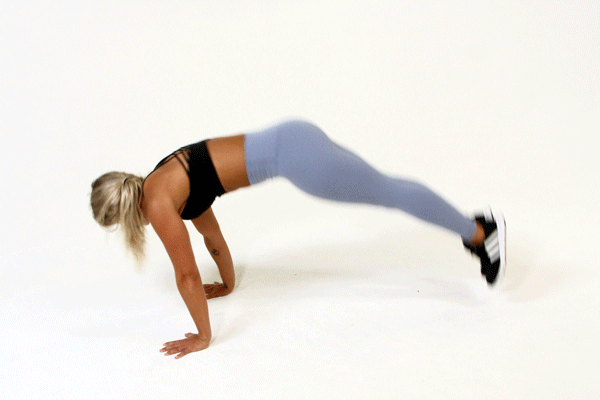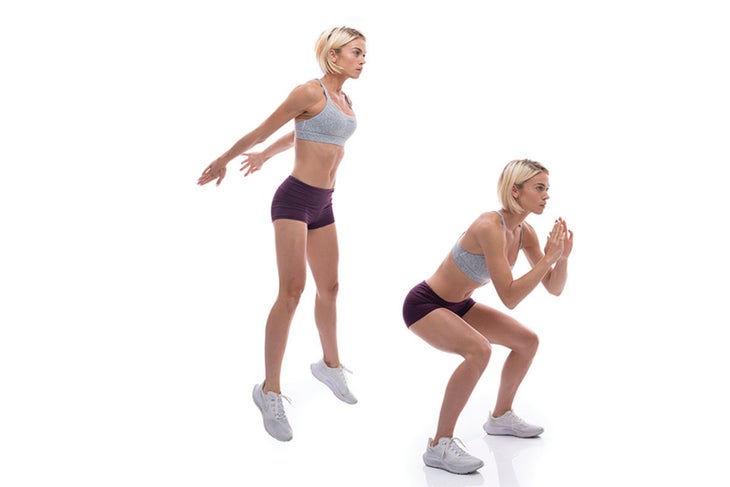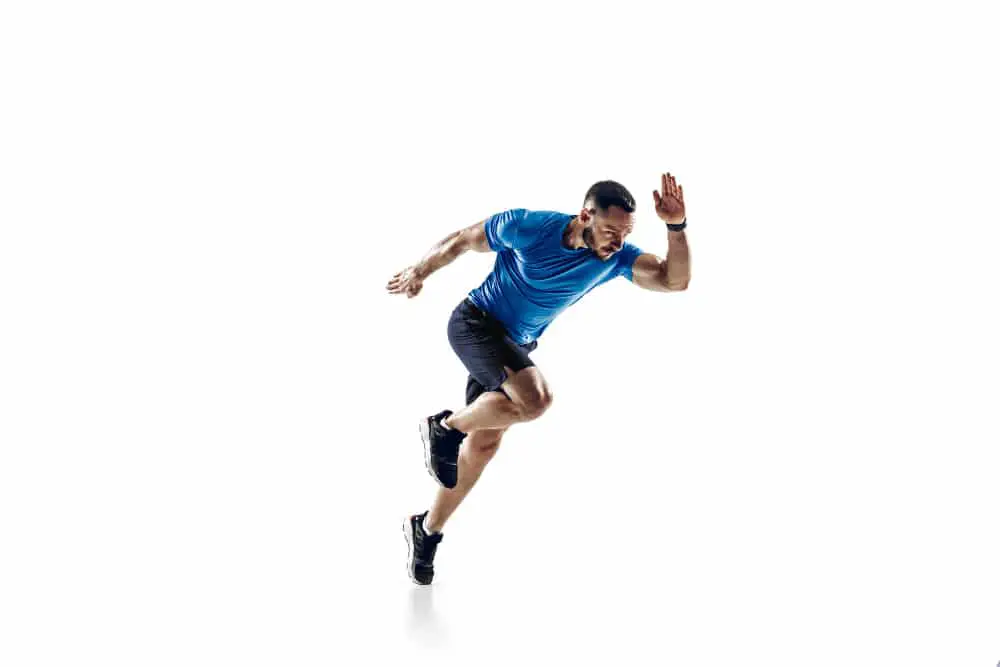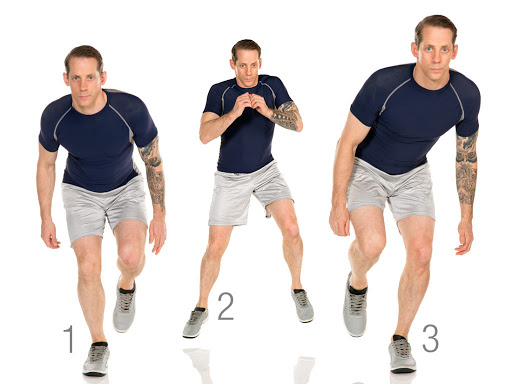When it comes to working out and staying healthy, there are tons of different exercises and routines that you choose. Within each of the exercises that you can choose from, you can tailor fit them to fit your lifestyle and goals. The type of exercise we are covering today is plyometrics. What exactly are plyometrics, and how can I do them?Plyometrics is a cardio workout that uses the speed and force of different movements to build muscle mass and burn calories. Plyometrics is an umbrella term used to describe exercises that use fast and explosive force to push your body off the ground or propel something through the air. Some examples of plyometric exercises are, running, jumping, throwing medicine balls, kicking, and some push-up variations.As you continue to read this article, we will be giving you an in-depth explanation of plyometric exercises and how they work. Furthermore, we will give you some examples of different plyometric exercises and a sample routine you can follow.
What is Plyometrics?
There is a good chance you have heard this term used before, which is often associated with box jumping. However, while box jumping is a plyometric exercise, plyometric is a term that can be used to describe any short, fast, and explosive exercise. These exercises allow you to generate the most force your muscles can provide in the shortest period of time.Every time you complete a single rep of a plyometric exercise, your muscles stretch to their fullest then fully contract. This gives your muscles more power for the next rep and increases their overall explosiveness. The combination of stretching and contracting your muscles over short periods of time increases their strength, power, flexibility, and speed.Plyometrics have been used to train professional athletes for decades. However, plyometric exercises have become more prevalent in the casual fitness scene in recent years. While strength training focuses on strengthening the neurological system and muscles, plyometric activities promote explosiveness, or our capacity to generate maximal power in the shortest amount of time. Imagine a sprinter taking off from the starting line or an Olympic long jumper leaping from the ground; both require explosive strength to succeed. Plyometrics, which concentrates on power’s “speed” component, is an essential part of most professional sports performance training.
Things You Must Know Before Doing Plyometrics

Plyometrics is a very high-intensity exercise that promotes power and speed. With that said, plyometrics have a greater chance of injuries if not performed correctly. Plyometrics need to be performed with proper form and by someone who is already in good shape. Plyometrics is an alternative method of strength training and should be used to supplement your everyday strength training routine. With that said, we have gathered a list of tips and other things you need to know before getting into plyometrics.
- Doing Plyometrics With Chronic Health Conditions
It is always a good idea to check with your doctor before starting a new form of exercise that is entirely different from what you are used to, and plyometrics is not an exception. You should avoid plyometrics if you have high blood pressure, high cholesterol, or heart disease because it is a high-intensity workout. Instead, it would be best if you focused on low-intensity workouts so that you are less likely to cause injury related to these health issues. If you have diabetes and want to give plyometrics a shot, you will need to make changes to your treatment plan regarding your diabetes, which depends on how many calories you are burning. Furthermore, if you have suffered from nerve damage that is related to your diabetes, you should avoid plyometrics altogether. Doing plyometric with diabetes-related nerve damage increases the risk of injury. If you have arthritis or some other joint or bone issues, then plyometrics is a no-go for you. Because plyometrics is a high-intensity workout, and because of the nature of plyometrics, most of the exercises put increased stress on your joints related to that exercise. This increased joint stress can lead to some nasty pain and injuries.You should also avoid plyometric if you are pregnant. The increased weight gain from being pregnant can cause you to lose balance and fall, which can lead to injuring yourself or your baby. Furthermore, the additional weight of your growing baby adds increased stress to the joints in the lower half of your body, and jumping adds even more stress.
- Limit Your Plyometric Exercises To One Or Two Times A Week
Recovery is an essential part of any exercise and increases strength, speed, and stamina. With that said, you will need to leave yourself enough time to let your muscles recover. During the recovery process, your muscles will heal and strengthen. This allows your muscles to get used to the stress they are going through. Which then allows your following plyometric routine to be slightly easier.
- Plyometrics Should Always Be Done At The Start Of Your Workout
Due to the explosiveness of plyometric exercises, you want to be as fresh as possible when doing them. However, plyometrics is a fatiguing and draining exercise. With that said, if you leave your plyometrics till the end or even the middle of your workout, they will be harder to do and thus increase your risk of causing injuries.
- Use A Mirror When Practicing Your Plyometrics
When doing your plyometric exercises, it always helps to use a mirror to watch and check your own form. Doing so will allow you to adjust your alignment to increase your effectiveness. For example, when using a mirror to do jumps, watch your knees and make sure they stay above your toes when you land. Furthermore, when using a mirror, make sure you do not collapse your upper body and that you land with your feet flat on the floor or box. Finally, your landing should be as quiet as possible. If you are making a loud noise when you land, then you are not adequately absorbing the impact.
- You Can Combine Plyometrics With Strength Training And Avoid Cardio
You should save your plyometric routine for when you are going to do strength training for the day. Cardio exercises are aerobic exercises and focus on different aspects of exercising than anaerobic exercises like strength training and plyometrics. Because of this, plyometrics should be paired with strength training days and should not be performed on days when you plan on doing cardio
- Make Sure To Warm Up And Stretch Before Doing Plyometrics
It is always smart and healthy to stretch and warm-up before getting into the core of your workout routine. Doing so will limber up your body and get the blood flowing allowing you to perform better when doing your workouts. An example of a dynamic warm-up is 5 minutes of light jogging, followed by five minutes of side shuffles, skipping, high knees, and butt kicks. This warm-up should be enough to get your body ready for your explosive plyometric workout.
What Are Some Plyometric Exercises?
Plyometric exercises include:
- Vertical Jumps
- Broad Jumps
- Skipping Rope
- Jump Squats
- Single-Leg Hopping
- Clapping Push-ups
- Throwing
- Kicking
Everything in the list provided above has one thing in common, a short, fast, and explosive movement, which is the bare essential for plyometric exercises. You’ll undoubtedly see a few wooden crates or metal platforms placed with other sports equipment if you go to the gym. These sorts of props are frequently used in plyometrics workouts to achieve higher muscle fiber extension.
Our Simple Plyometric Circuit
Below we have made a simple plyometric circuit that is perfect for those who are new to plyometrics. This exercise is meant to be done over 30 minutes and can be done two to three times per week. Do each exercise for atleast 30 seconds up to 1 minute, then rest for 30 seconds. It would be best to do each of these exercises twice before moving on to the next exercise. You can change up this circuit as you see fit so that you can complete it. You can increase or decrease the number of times you do the exercise before moving on to the next. You can also remove any of these exercises if you see fit. However, if you plan to add any additional exercises, it would be best to practice the exercise you wish to add extensively beforehand.Each of the exercises that we have chosen for our beginner circuit will be listed below and briefly explain how to do the exercise.
Warm-Up
Start by doing a five to ten-minute warm-up consisting of light jogging, side shuffles, skipping, high knees, butt kicks, jumping jacks, or any other warm-up exercise that you see fit once your warm-up is complete rest for 30 seconds before starting the circuit.
- Ski Jumpers
- Jump from side to side, keeping your knees bent and feet together
- While jumping, swing your arms as if you were skiing
- Ski Abs

© Openfit
- Start off in a plank position keeping your feet together
- While keeping your feet together, jump them out to the side, swinging them towards your left shoulder
- Jump back to the starting position
- Jump and swing your legs to the opposite side
- Jump Squats

© Oxygen Mag
- Stand with your feet spread just past your hips and your toes facing slightly outward
- Lower your body down into a squat until your thighs are parallel to the floor
- Jump up as high and explosively as you can form this position
- Once you land lower your body back down to the squat position
- Standing Mountain Climbers
- Run in place while doing high knees
- Football Wide Sprints

© master1305
- Run in place with a wide stance for 3 seconds
- Drop to the ground, get back up, and start running again
- Squat Thrusts

© Alpha male
- Start in the plank position
- Jump your legs forward, keeping your feet spread just past your hips
- Stand up
- Squat back down
- Place your hands on the ground and jump back into the plank position
- Single-Leg Hops
- Stand on your right foot

- © PumpOne, LLCwith your knee slightly bent
- Jump to the right and land on your left foot
- Bend your knee and jump to the left, landing on your right foot
- After landing on your right foot, jump to the right, landing on your left foot
Cooling Down
Remember to rest for 30 seconds in between each exercise. Once you have finished your circuit, rest for 10 minutes while doing full-body stretches.
Final Thoughts
Plyometrics are high intensity workouts that are intended to increase your strength, speed, and explosiveness. Plyometrics should only be performed by people who are already in shape and looking for a way to mix up their strength training routine. With that said, we hope that our plyometric circuit helps you understand the type of workouts you will need to do when making your own circuit.

